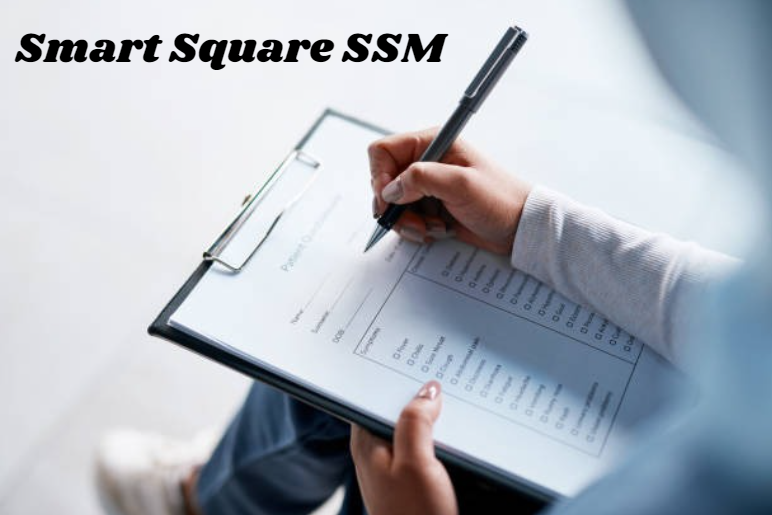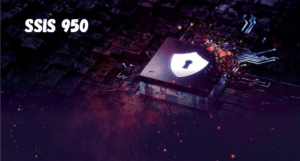Smart Square SSM: Revolutionizing Healthcare Workforce Management with Predictive Scheduling
Contents
- 1 Introduction
- 2 Understanding Smart Square SSM: An Overview
- 3 How Smart Square SSM Optimizes Healthcare Scheduling
- 4 Comparing Smart Square SSM to Traditional Scheduling Methods
- 5 The Impact of Smart Square SSM on Patient Care
- 6 Case Studies: Success Stories with Smart Square SSM
- 7 Frequently Asked Questions (FAQs) About Smart Square SSM
- 7.1 1. What makes Smart Square SSM different from other scheduling software?
- 7.2 2. How does Smart Square SSM handle unexpected changes in staff availability?
- 7.3 3. Can Smart Square SSM be integrated with other systems?
- 7.4 4. Is Smart Square SSM easy to use?
- 7.5 5. What types of healthcare facilities can benefit from Smart Square SSM?
- 8 The Future of Healthcare Scheduling with Smart Square SSM
- 9 Conclusion
Introduction
In the fast-paced and ever-evolving healthcare industry, the ability to manage workforce schedules efficiently is more critical than ever. Ensuring that the right healthcare professionals are in the right place at the right time can significantly impact patient outcomes, staff satisfaction, and operational efficiency. This is where Smart Square SSM comes into play—a cutting-edge healthcare scheduling software that leverages predictive tools to create optimized staff schedules, ultimately transforming workforce management in healthcare settings.
In this comprehensive guide, we will explore the various facets of Smart Square SSM, from its key features and benefits to its impact on the healthcare industry. We will also delve into how it compares to traditional scheduling methods and why it stands out as a leader in workforce management solutions. Our goal is to provide insights that go beyond existing information, offering a deep dive into how Smart Square SSM is changing the game for healthcare organizations across the USA.
Understanding Smart Square SSM: An Overview
What is Smart Square SSM?
Smart Square SSM is a sophisticated healthcare scheduling software designed to streamline and optimize the process of workforce management. It utilizes predictive scheduling tools and advanced analytics to ensure that healthcare facilities can create better staff schedules.
By analyzing historical data, anticipated patient volume, and staff availability, Smart Square SSM can predict the optimal staff mix needed for various shifts, reducing the likelihood of overstaffing or understaffing.
The Importance of Workforce Management in Healthcare
Effective workforce management is vital in healthcare due to the sector’s unique challenges. Unlike other industries, healthcare cannot afford delays or gaps in service, as they can directly affect patient care.
Hospitals and clinics need to balance the availability of healthcare professionals with the fluctuating demands of patient care, all while ensuring that staff members are not overworked and that labor costs are kept in check. Smart Square SSM addresses these challenges by providing a comprehensive solution that enhances efficiency and supports better decision-making.
Key Features of Smart Square SSM
Smart Square SSM offers a range of features designed to meet the specific needs of healthcare organizations:
- Predictive Scheduling: Smart Square SSM’s predictive tools analyze data to forecast patient demand and staff requirements, helping to create schedules that align with actual needs.
- Real-Time Adjustments: The software allows for real-time schedule adjustments based on unexpected changes, such as staff call-outs or sudden increases in patient volume.
- Comprehensive Reporting: Smart Square SSM provides detailed reports on scheduling efficiency, labor costs, and staff utilization, enabling administrators to make informed decisions.
- User-Friendly Interface: The software is designed with ease of use in mind, ensuring that even those with limited technical expertise can navigate it effectively.
- Integration Capabilities: Smart Square SSM can be integrated with existing HR and payroll systems, ensuring a seamless flow of information across departments.
How Smart Square SSM Optimizes Healthcare Scheduling
The Power of Predictive Analytics
One of the standout features of Smart Square SSM is its use of predictive analytics. By analyzing historical data on patient volume, staff availability, and other relevant factors, the software can predict future staffing needs with a high degree of accuracy. This means that healthcare facilities can create schedules that are closely aligned with actual demand, reducing the risk of overstaffing (which increases labor costs) or understaffing (which can compromise patient care).
For example, if historical data shows that a hospital experiences a surge in patient admissions during the winter months, Smart Square SSM can predict this pattern and suggest an increase in nursing staff during that period. Conversely, if data indicates a lull in patient volume during certain times of the year, the software can recommend a reduction in staff to avoid unnecessary labor costs.
Real-Time Adjustments and Flexibility
In healthcare, flexibility is key. Patient volumes can change rapidly, and staff availability can be unpredictable due to factors like illness or personal emergencies. Smart Square SSM addresses this need for flexibility by allowing for real-time schedule adjustments.
If a staff member calls out sick, the software can quickly identify available replacements and adjust the schedule accordingly. This real-time capability ensures that patient care is not disrupted and that staff workloads remain manageable.
Enhancing Staff Satisfaction
Staff satisfaction is a critical component of effective workforce management. Healthcare professionals who feel overworked or undervalued are more likely to experience burnout, which can lead to higher turnover rates and lower quality of care.
Smart Square SSM helps to enhance staff satisfaction by creating fair and balanced schedules that consider individual preferences and availability. The software also allows staff members to access their schedules easily, request changes, and communicate with managers, fostering a more collaborative and supportive work environment.
Cost Management and Efficiency
Labor costs are one of the largest expenses for healthcare organizations. Smart Square SSM helps to control these costs by optimizing staff schedules to match actual demand. By reducing instances of overstaffing, the software ensures that hospitals and clinics are not paying for unnecessary labor hours.
At the same time, it minimizes the risk of understaffing, which can lead to costly overtime or the need for temporary staff. The result is a more efficient use of resources and better financial outcomes for the organization.
Comparing Smart Square SSM to Traditional Scheduling Methods
The Limitations of Traditional Scheduling
Traditional scheduling methods in healthcare often involve manual processes, such as creating schedules on spreadsheets or using basic scheduling software. These methods are time-consuming, prone to errors, and often lack the flexibility needed to respond to real-time changes. Additionally, traditional scheduling does not typically involve predictive analytics, meaning that schedules are often based on guesswork rather than data-driven insights.
Manual scheduling can also lead to inconsistencies and biases, as it may rely on subjective decisions made by individual managers. This can result in unfair schedules, staff dissatisfaction, and inefficiencies that ultimately impact patient care.
The Advantages of Smart Square SSM
Smart Square SSM overcomes the limitations of traditional scheduling by providing a data-driven, automated solution that enhances efficiency and accuracy. The use of predictive analytics ensures that schedules are aligned with actual demand, while real-time adjustment capabilities allow for flexibility in the face of unexpected changes. Moreover, the software’s user-friendly interface and integration capabilities make it easy to implement and use across various departments within a healthcare organization.
By automating the scheduling process, Smart Square SSM reduces the administrative burden on managers, allowing them to focus on more strategic tasks. It also ensures consistency and fairness in scheduling, which can lead to higher staff satisfaction and retention rates.
The Impact of Smart Square SSM on Patient Care
Improving Patient Outcomes
The ultimate goal of any healthcare organization is to provide high-quality care to patients. Smart Square SSM contributes to this goal by ensuring that healthcare facilities are adequately staffed at all times. By aligning staff schedules with patient demand, the software helps to prevent situations where patients are left waiting due to understaffing or where staff members are stretched too thin to provide adequate care.
For example, during peak times in an emergency department, having the right number of nurses, physicians, and support staff is crucial to providing timely and effective care. Smart Square SSM’s predictive scheduling ensures that these critical moments are anticipated and that the necessary resources are in place to meet patient needs.
Reducing Wait Times and Enhancing Patient Experience
Long wait times are a common source of frustration for patients and can negatively impact their overall experience. By optimizing staff schedules to meet patient demand, Smart Square SSM helps to reduce wait times and improve the overall patient experience.
When patients receive prompt attention and care, they are more likely to have a positive perception of the healthcare facility, leading to higher satisfaction rates and better health outcomes.
Supporting Continuity of Care
Continuity of care is essential for patients with chronic conditions or those requiring ongoing treatment. Smart Square SSM supports continuity of care by ensuring that the same healthcare professionals are available to patients over time, fostering stronger patient-provider relationships. This consistency can lead to better communication, more personalized care, and ultimately, better health outcomes for patients.
Case Studies: Success Stories with Smart Square SSM
Case Study 1: Large Urban Hospital
A large urban hospital with over 1,000 beds implemented Smart Square SSM to address challenges related to staff scheduling and patient care. Before adopting the software, the hospital struggled with frequent instances of understaffing, particularly during peak times in the emergency department. This led to long wait times for patients and high levels of stress for staff.
After implementing Smart Square SSM, the hospital saw a significant improvement in scheduling efficiency. The software’s predictive analytics allowed administrators to anticipate busy periods and ensure that the necessary staff were on hand to meet patient demand. As a result, patient wait times decreased by 20%, staff satisfaction increased, and the hospital reported a reduction in overtime costs.
Case Study 2: Regional Healthcare Network
A regional healthcare network with multiple facilities across several states faced challenges in coordinating staff schedules across its various locations. The network implemented Smart Square SSM to streamline the scheduling process and improve consistency across its facilities.
With Smart Square SSM, the network was able to create standardized scheduling practices that could be applied across all its locations. The software’s integration capabilities allowed for seamless communication between facilities, ensuring that staff could be efficiently allocated where they were needed most. The network reported improved staff utilization, reduced labor costs, and enhanced patient care as a result of the implementation.
Frequently Asked Questions (FAQs) About Smart Square SSM
1. What makes Smart Square SSM different from other scheduling software?
Smart Square SSM stands out due to its use of predictive analytics and real-time adjustment capabilities. Unlike traditional scheduling software that relies on manual processes, Smart Square SSM leverages data to create optimized schedules that align with actual patient demand. This ensures that healthcare facilities are neither overstaffed nor understaffed, leading to better patient care and cost savings.
2. How does Smart Square SSM handle unexpected changes in staff availability?
Smart Square SSM is designed to be flexible and responsive. If a staff member calls out sick or if there is a sudden increase in patient volume, the software can quickly identify available replacements and adjust the schedule in real-time. This ensures that patient care is not disrupted and that staff workloads remain manageable.
3. Can Smart Square SSM be integrated with other systems?
Yes, Smart Square SSM is designed to integrate seamlessly with existing HR, payroll, and other relevant systems. This integration ensures a smooth flow of information across departments, reducing administrative burdens and improving overall efficiency.
4. Is Smart Square SSM easy to use?
Smart Square SSM features a user-friendly interface that is intuitive and easy to navigate. Even staff members with limited technical expertise can quickly learn to use the software, making it accessible to a wide range of users within a healthcare organization.
5. What types of healthcare facilities can benefit from Smart Square SSM?
Smart Square SSM is suitable for a wide range of healthcare facilities, including hospitals, clinics, long-term care facilities, and outpatient centers. The software’s flexibility and scalability make it an ideal solution for both small and large organizations.
The Future of Healthcare Scheduling with Smart Square SSM
Advancements in Predictive Analytics
As technology continues to evolve, so too will the capabilities of Smart Square SSM. Future advancements in predictive analytics could allow for even more accurate forecasting of patient demand and staff needs, further enhancing the software’s ability to create optimized schedules. This could lead to even greater efficiencies and better patient outcomes in the years to come.
Integration with Emerging Technologies
The healthcare industry is increasingly adopting emerging technologies such as artificial intelligence (AI) and machine learning (ML). Smart Square SSM could potentially integrate these technologies to further enhance its predictive capabilities and provide even more precise scheduling solutions. For example, AI could be used to analyze a broader range of data sources, such as social determinants of health, to predict patient demand with greater accuracy.
Expanding Beyond Scheduling
While Smart Square SSM is currently focused on workforce scheduling, there is potential for the software to expand into other areas of healthcare operations. For example, it could be used to optimize resource allocation, such as the distribution of medical supplies or the management of hospital beds. By broadening its scope, Smart Square SSM could become an even more valuable tool for healthcare organizations.
Conclusion
Smart Square SSM is a game-changer in the world of healthcare workforce management. Its use of predictive scheduling tools, real-time adjustment capabilities, and integration features make it a powerful solution for healthcare organizations looking to optimize their staff schedules and improve patient care. By reducing labor costs, enhancing staff satisfaction, and ensuring that the right resources are in place at the right time, Smart Square SSM is helping to shape the future of healthcare.
As the healthcare industry continues to evolve, tools like Smart Square SSM will play an increasingly important role in ensuring that organizations can meet the demands of patient care while maintaining operational efficiency. For healthcare administrators looking to stay ahead of the curve, investing in Smart Square SSM is a strategic move that promises significant returns.






















































Post Comment